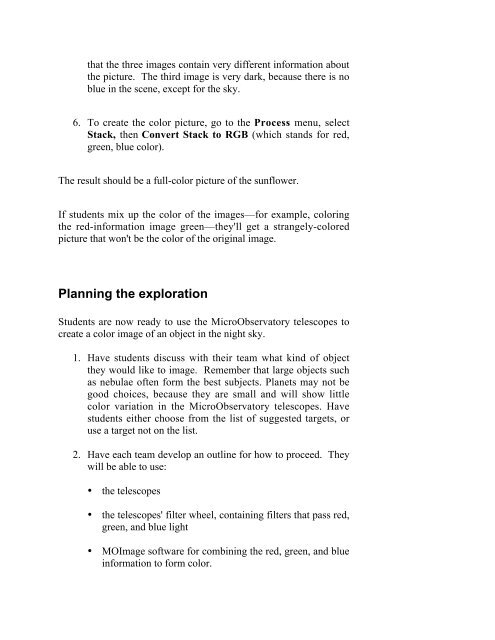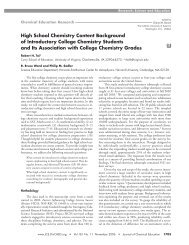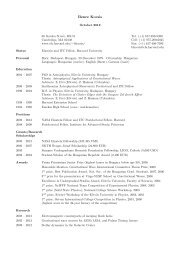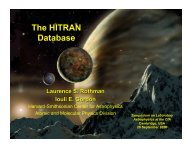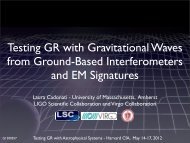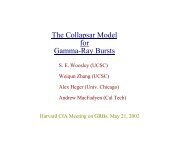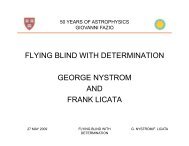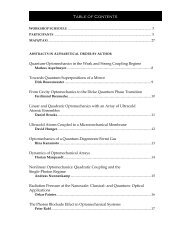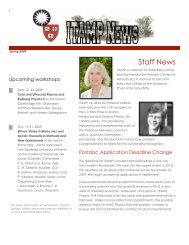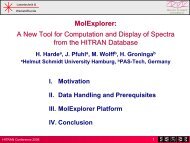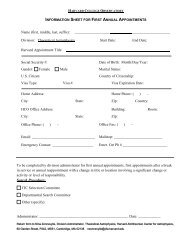What does the universe look like in color?
What does the universe look like in color?
What does the universe look like in color?
You also want an ePaper? Increase the reach of your titles
YUMPU automatically turns print PDFs into web optimized ePapers that Google loves.
that <strong>the</strong> three images conta<strong>in</strong> very different <strong>in</strong>formation about<br />
<strong>the</strong> picture. The third image is very dark, because <strong>the</strong>re is no<br />
blue <strong>in</strong> <strong>the</strong> scene, except for <strong>the</strong> sky.<br />
6. To create <strong>the</strong> <strong>color</strong> picture, go to <strong>the</strong> Process menu, select<br />
Stack, <strong>the</strong>n Convert Stack to RGB (which stands for red,<br />
green, blue <strong>color</strong>).<br />
The result should be a full-<strong>color</strong> picture of <strong>the</strong> sunflower.<br />
If students mix up <strong>the</strong> <strong>color</strong> of <strong>the</strong> images—for example, <strong>color</strong><strong>in</strong>g<br />
<strong>the</strong> red-<strong>in</strong>formation image green—<strong>the</strong>y'll get a strangely-<strong>color</strong>ed<br />
picture that won't be <strong>the</strong> <strong>color</strong> of <strong>the</strong> orig<strong>in</strong>al image.<br />
Plann<strong>in</strong>g <strong>the</strong> exploration<br />
Students are now ready to use <strong>the</strong> MicroObservatory telescopes to<br />
create a <strong>color</strong> image of an object <strong>in</strong> <strong>the</strong> night sky.<br />
1. Have students discuss with <strong>the</strong>ir team what k<strong>in</strong>d of object<br />
<strong>the</strong>y would <strong>like</strong> to image. Remember that large objects such<br />
as nebulae often form <strong>the</strong> best subjects. Planets may not be<br />
good choices, because <strong>the</strong>y are small and will show little<br />
<strong>color</strong> variation <strong>in</strong> <strong>the</strong> MicroObservatory telescopes. Have<br />
students ei<strong>the</strong>r choose from <strong>the</strong> list of suggested targets, or<br />
use a target not on <strong>the</strong> list.<br />
2. Have each team develop an outl<strong>in</strong>e for how to proceed. They<br />
will be able to use:<br />
• <strong>the</strong> telescopes<br />
• <strong>the</strong> telescopes' filter wheel, conta<strong>in</strong><strong>in</strong>g filters that pass red,<br />
green, and blue light<br />
• MOImage software for comb<strong>in</strong><strong>in</strong>g <strong>the</strong> red, green, and blue<br />
<strong>in</strong>formation to form <strong>color</strong>.


